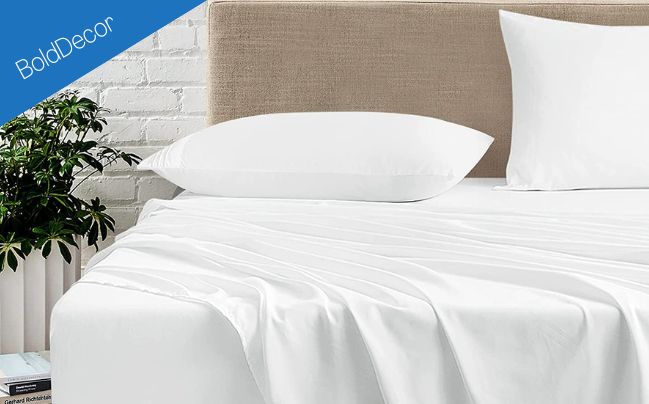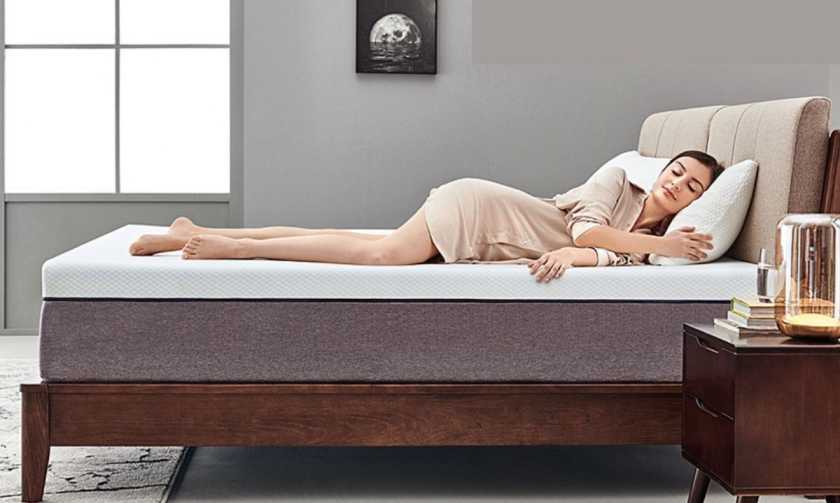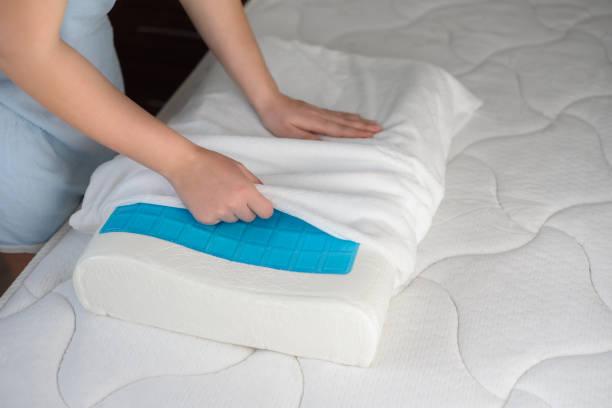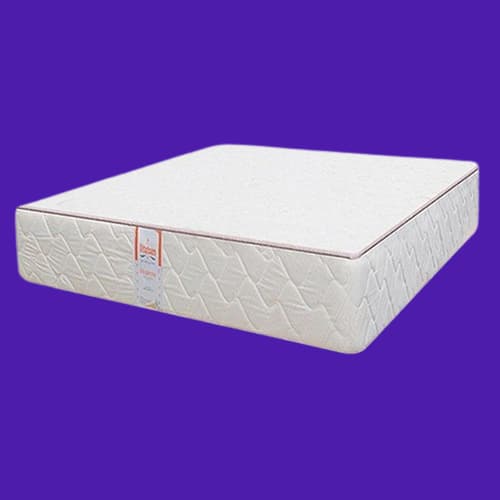Microfiber is known to be soft, quick-drying, and absorbent. In the earlier days, microfibers were used for industrial purposes.
However, the increase in demand for soft-quick and absorbent bedding has compelled companies to take advantage of synthetic thread to manufacture bedding items. – But are microfiber sheets toxic or safe?
In case you are wondering whether these fibers are toxic or not, here is a quick guide on everything that you need to know about microfibers and bedding sets.
What is a microfiber?
Microfiber is a synthetic fiber finer than one denier or decitex/thread. This means that a single microfiber is only a fraction of the diameter of silk. It is thinner than a strand of silk, which is 1/5 the diameter of human hair.
Are microfiber sheets toxic?
More Reads:
The simple answer is yes – Microfiber bedding has some real problems. Microfiber is synthetic—it’s made of polyester and other materials—and can release chemicals like phthalates and formaldehyde into your sleep space.
According to research, phthalates are used to make plastic more flexible, but they can also be hormone disruptors and may cause birth defects if you’re pregnant.
All these chemicals have been linked to health issues like asthma and allergies, cancer, obesity, autism spectrum disorder (ASD), early puberty in girls, and low sperm counts in men.
So, when you’re sleeping on microfiber bedding, these chemicals can easily be inhaled or absorbed through your skin as you breathe or move around at night.
3 Best Amazon selling Microfiber bedsheets
What are microfibers made up of?

Microfibers are made from either polyester, polyamides (nylon), or a conjugation of polyester, polyamide, and polypropylene.
In general, the term microfiber is used to describe any synthetic fiber finer than one denier-Which is the measurement of fiber thickness.
How long do microfiber sheets last?
They are durable and resist pilling, which makes them long-lasting bedding items. These sheets can last up to 200 washes if they are taken care of properly. However, there might be quality issues depending on the density and thickness of these sheets.
Are microfiber sheets hot?
Yes, microfiber sheets can be quite warm when they are in use. This is because the material is made of synthetic fibers that trap body heat.
This can make the sheets uncomfortable if you are prone to sweating. If you are using the sheets to sleep in, it is advisable to keep a cool sheet on top of you to avoid overheating.
Facts and benefits of microfiber
Microfiber is relatively new but has quickly become the go-to fabric for sheets, towels, and other bedding items. It’s soft, durable, and inexpensive—even though Microfiber can be toxic, it has a high degree of use cases in our homes.
Here are what you should know about Microfiber
- Microfibers are used for manufacturing products like duvets, towels, bedsheets, sofa covers, and many other items that we use in our daily lives.
- Microfibers have a high absorption rate. They can hold up to 8 times their own weight in water. This makes them highly suitable for making towels and clothes.
- They are also resistant to bacteria and mold formation because of the tight weave that is used during manufacturing.
- They can be used to make insulators. These insulators are lightweight, thin, flexible, and very strong. They don’t allow any kind of heat to escape because they are made up of tightly packed fibers.
- Microfiber products are so efficient at absorbing liquids. Thus, they can be used in nearly every cleaning application such as windows, mirrors, floors, bathrooms, and kitchen cleaning, without the need for excessive amounts of water or expensive chemicals.
- Microfiber cloths can be used to clean hard-to-reach areas such as crevices, corners, under equipment, and other difficult-to-access spots.
Do microfiber sheets have chemicals?
Yes! Microfiber sheets are harmful and can easily interact with other chemicals in the environment which can lead to a more severe health threat, besides the minor running nose most people who use microfiber bedding often experience.
For this reason, it is important to carefully read the ingredients list of any microfiber sheet before purchase.
Additionally, it is best to avoid using microfiber sheets in high-traffic areas where bacteria and other contaminants can accumulate.
Is microfiber safe to sleep on?

Though, Microfiber bedding is a popular choice for people who want a soft, comfortable surface to sleep on. Yet, there are cases of toxicity with this type of material, thus it is essential to inspect the fabric for any signs of wear or tear before making a decision.
If the fabric appears to be damaged, do not use it. Instead, replace it with a safer option like cotton bedding.
What are Microfiber allergy symptoms?
Microfiber allergy symptoms can be minor, such as a runny nose, sneezing, and itchy eyes, or they can be more severe, such as a full-blown allergy to microfiber cloths. It is significant to know the signs and symptoms of a microfiber allergy in order to take the right steps to alleviate them.
Minor symptoms can usually be treated with over-the-counter medications, such as Sudafed or Claritin. If the symptoms are more severe, such as an allergic reaction that results in a rash, it is indispensable to seek medical attention.
In some cases, an epinephrine injection may be required in order to control the symptoms.
To prevent microfiber allergies, it is essential to take steps to avoid being exposed to them. This can include avoiding clothes made from microfiber materials, using a dust mop made from microfiber materials sparingly, and avoiding contact with microfiber surfaces.
If you are already experiencing symptoms, it is essential to see a doctor in order to determine the cause and prescribe the best treatment.
Microfiber sheet FAQs
Are microfiber sheets bad for the environment?
Yes, microfiber sheets are bad for the environment —Manufacturing microfiber sheets requires a lot of water, which in turn requires energy to produce.
Additionally, the materials used in the manufacture of microfiber sheets can release harmful chemicals into the environment. These chemicals can end up polluting lakes, rivers, and other water bodies.
Is microfiber better than cotton?

There is some debate about the superiority of one fabric over the other, but on the whole, microfiber is considered to be a better choice. One reason for this is that microfiber is not as absorbent as cotton, which means it will not leave a wet feeling on your skin.
Also, microfiber is more durable and resistant to wear and tear. It also has a low linting rate, which means it will not create fuzz or lint in the air.
In terms of comfort, microfiber is often cited as being more comfortable than cotton—This is because it is less constricting and can better wick sweat away from the skin.
Additionally, it has a softer feel, which can be soothing after a long day of wear. Lastly, it is easier to clean than cotton, which means you will not have to deal with buildup or stains.
What kind of sheets is the most comfortable?
Buying sheets is a tricky business. We spend eight-plus hours a night sleeping on our sheets, so the ones you choose should be comfortable, durable, and breathable.
A good sheet set should also fit well on your mattress and stay in place throughout the night. You can opt for Egyptian cotton, flannel, linen or Jersey knit sheets — each fabric has different merits, so it’s important to find a set that fits your needs.
Below are a few we feel can deliver for you!
- Brooklinen Linen Sheet Set
- Cozy Earth Bamboo Sheet Set
- Parachute Sateen Sheet Set
- Mellanni Brushed Microfiber Sheets
- PeachSkinSheets Moisture-Wicking Sheet Set
- Layla Sleep Bamboo Sheets
- Buffy Eucalyptus Sheets
- Casper Percale Sheets
What is the difference between microfiber & bamboo sheets?
The difference between microfiber and bamboo sheets is more like an imaginary thin line because both bedding material share some common features, however here are what you should know about them.
Durability
Bamboo is well known for its durability. Even when these organic bamboo sheets are often washed, they don’t shed nor do they easily wear out.
Microfiber sheets are made up of fibers from polyester, which provides exceptional durability as well. But it can be prone to pilling or fussing after a few months of use or washings if it’s not high-quality microfiber.
Cost difference
The cost of bamboo sheets can range from $50 to $200, depending on many factors like quality, thread count, and where you buy them from.
Microfiber sheets can also be found in a similar price range, but because they’re made from synthetic materials instead of natural ones like bamboo fiber, their prices tend to be lower overall.
This means you can get more affordable options for microfiber sheets than there usually are for natural bamboo sheets.
Softness
Bamboo is highly regarded as a piece of soft fabric, even softer than microfiber and cotton. Some of the most luxurious bamboo sheets are so soft that they feel like cashmere or silk on your skin.
Quality & Comfort
Microfiber sheets are not only wrinkle-resistant, but they also offer high quality and comfort at a reasonable price. Bamboo sheets, on the other hand, maybe more expensive than the average microfiber sheet, but it definitely offers a lot more benefits than just ordinary beddings.
Final thought
As far as toxicity is concerned, there are study reports which show that microfiber sheets are harmful to the environment and your health.
Thus, it’s always recommended to take caution when using anything new, especially if you have never used it before.
With that being said, it is important that you stick to bedding made from natural fibers like cotton or hemp and ditch synthetic fibers in favor of plant-based ones like bamboo— Read more about Boomboo sheets here.
Useful resource:
Meaning of Microfiber – Wikipedia
Phthalates additives in plastics — Pmc





